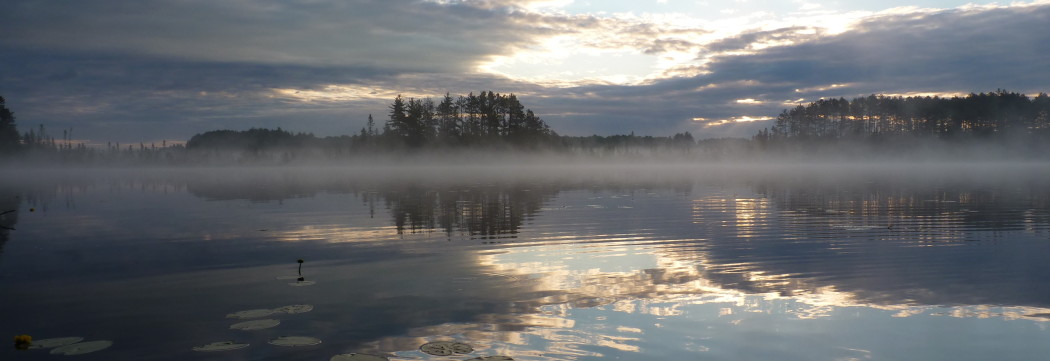
Snowshoe Hare
The White Season has finally settled upon the Northern Wisconsin woods, with snow blanketing everything as far as the eye can see. Young White Pines bend low under the weight of the most recent snowfall. Snowshoe Hares, now garbed in their white coats, hop and forage for twigs, bark, and needles. Cloudless skies tend to usher colder temperatures that have so far reached -16 Fahrenheit (-26.67 Celsius). Cloudy skies, while making snowfall more likely, can be an insulating factor, and offer temporary reprieve from subzero temperatures.
Despite the colder temperatures, the seekers extended their stay in the Green Season Camp in order to replace the support poles on the lean-to shelter, and to fully ready Winter Camp for their move. They also took down the winter wigwam that was built almost two decades ago, and worked diligently to store the birch bark panels and woven mats for future use, and for safekeeping throughout the winter.

Lean-to shelter at Winter Camp

Caretaker making fire
Berry Love, Dancing Bear, Pond Lily, and Caretaker* moved into the lean-to at Winter Camp during the last moon where fire is kept only at the hearth outside. Those without experience living outdoors during winter might have a difficult time understanding how anyone could live, eat, and sleep out in the wild amid wind, snow, and temperatures well below freezing.
Animals, plants, and humans go through a physiological change when exposed to prolonged cold temperatures, and thus are able to acclimate as needed in surprisingly short order. Sitting in front of an outdoor fire all Sun long to keep warm is not how the seekers wish to experience their White Season. However, they do live outdoors in frigid temperatures, so they are learning the vital importance of feeding and maintaining their inner furnace: their core body temperature. They rely on quality fats as their prime fuel, on being physically active to keep the internal fire burning, and on wool’s insulating and somewhat impermeable qualities to retain that warmth.
Indigenous people understood how to live as part of nature because they needed to. Progress has ushered in such inventions as the light bulb and central heat, among other things. With these added conveniences, it was unnecessary to retain the knowledge possessed by natives. The seekers are returning to what many of us have lost by cultivating their relationship with nature, and by learning and integrating the skills necessary to live well in the wild in all seasons.
In the next few posts, we’ll be exploring the differences between the Green Season and Winter Camps. We’ll look at the skills and practices that need honing, not just to survive, but to be comfortable in the northern hemisphere’s White Season.
*Shining Dragon Fly is currently not at camp because she needed to attend to a family matter. 
